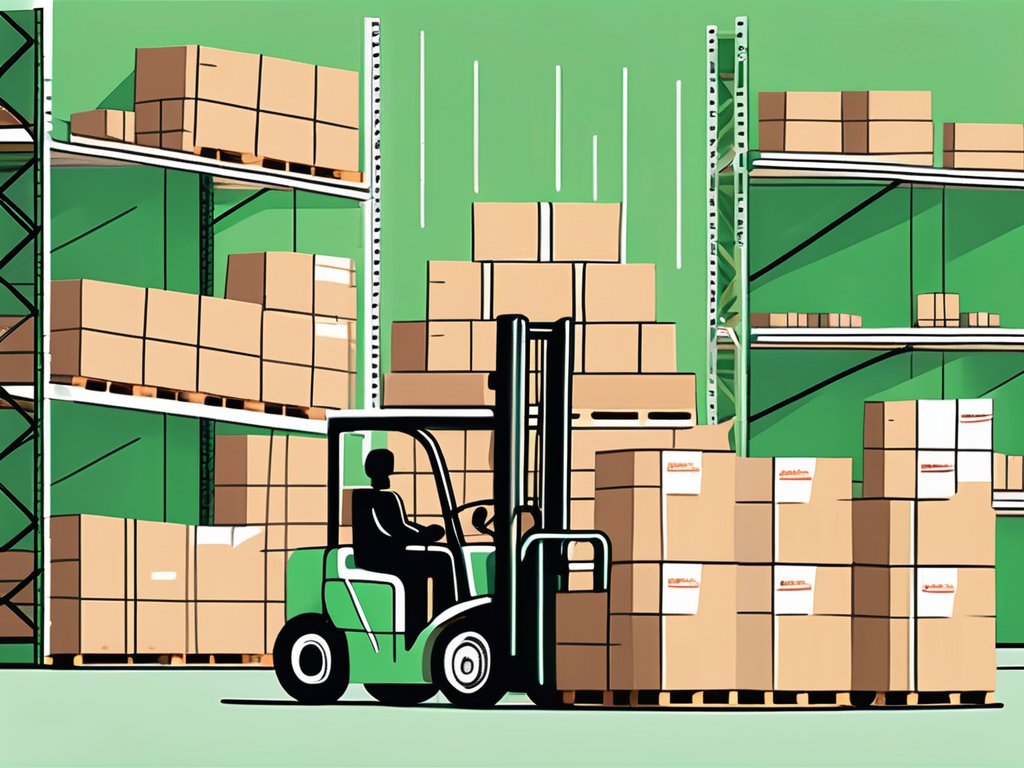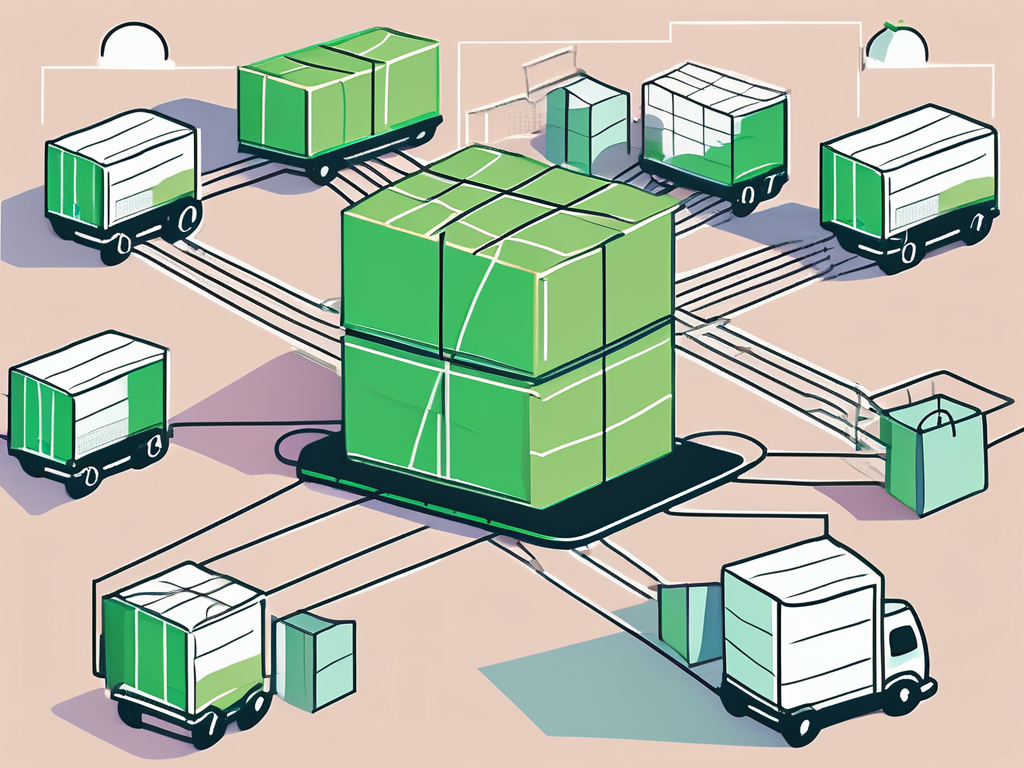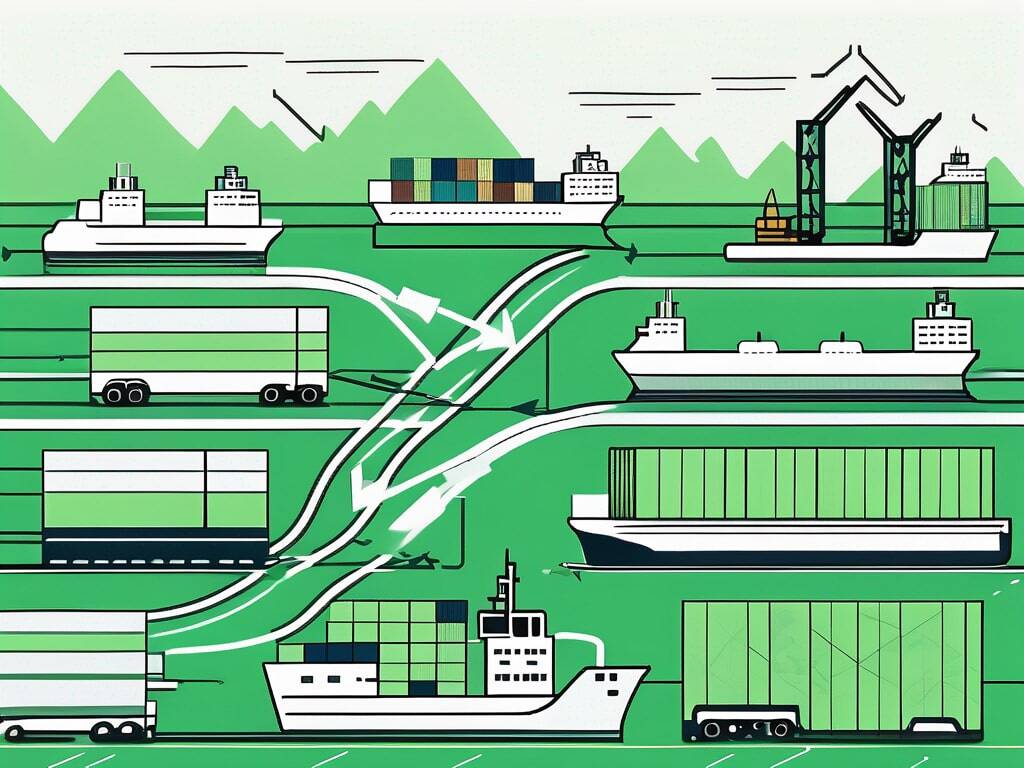Share this
Use Palletized Shipping to Make Your Logistics System More Efficient
by Shipfusion Team on Nov. 26, 2024

Palletized shipping enhances logistics efficiency by organizing goods onto pallets—transport platforms designed for easy handling and stability. This guide breaks down the mechanics of palletized shipping, its connection to less-than-truckload (LTL) shipping, when and why to use it, and how to optimize this method for cost-effectiveness.
What Is Palletized Shipping?
Palletized shipping refers to consolidating multiple items onto a pallet, creating a stable, manageable unit for easier transport. Pallets are typically made of wood, plastic, or metal, and come in standardized sizes to suit various products. By using pallets, businesses streamline loading and unloading, reduce product damage risk, and ensure efficient space utilization during transit.
Using pallets brings measurable efficiency gains to warehouse management. Palletized goods can be quickly accessed and organized, saving time on manual handling and enabling faster turnaround. Stacking and securing these units optimizes shipping containers and truck space, reducing costs while supporting smoother cross-border transit, as standardized pallet sizes align with international shipping regulations.
The environmental impact of palletized shipping is another advantage. Many businesses are adopting reusable plastic pallets or eco-friendly wooden pallets, reducing waste compared to single-use packaging. Efficient stacking means fewer trips, lowering fuel use and cutting carbon emissions. Palletized shipping thus aligns with both logistical efficiency and sustainable practices—a growing priority for today’s businesses.
Is LTL Shipping the Same as Palletized Shipping?
While often connected, LTL shipping and palletized shipping serve distinct functions within logistics. LTL shipping consolidates shipments from multiple companies into one truck, allowing each business to only pay for the space they use. This method is highly efficient for businesses with smaller loads, especially those that can’t fill an entire truck. On the other hand, palletized shipping refers to the practice of placing goods onto pallets to ensure stability, protect items, and maximize space during transport. Palletized shipping isn’t limited to LTL; it’s a method that applies to various shipping models, including full truckload (FTL) and even international air freight.
A key distinction between LTL and palletized shipping lies in the focus of each. LTL shipping is primarily a cost-saving strategy for businesses with smaller shipments that need efficient transport within a shared truck. In contrast, palletized shipping emphasizes the organization, protection, and handling efficiency of the products themselves. Palletized goods allow for secure stacking and easier loading and unloading, which not only reduces handling time but also minimizes product damage during transit. This structural difference impacts each shipping model's cost structure, with palletized shipping being valuable for both partial and full loads by enhancing space utilization and handling efficiency, regardless of shipment size.
When to Use Palletized Shipping In LTL
Using pallets in LTL shipments is ideal when product stability and protection are critical. For fragile or high-value goods, palletized shipping provides added stability that significantly reduces the risk of damage from shifting loads, a common challenge in shared truck spaces. For example, businesses shipping glassware, electronics, or delicate machinery parts can benefit from palletized LTL shipments to protect goods from the bumps and movement typical of a multi-stop journey. Palletizing these items ensures they’re loaded, stacked, and transported in an organized manner, reducing product exposure to handling risks.
Another scenario where palletized shipping proves beneficial within LTL is when businesses need to optimize space usage. LTL carriers often charge based on the amount of space occupied rather than the weight alone, so grouping products onto pallets can minimize the area needed for transport.
By palletizing, businesses not only save on freight costs but also improve loading and unloading efficiency, as forklifts can handle pallets faster than loose items. In situations where turnaround time is critical, such as with high-demand inventory, palletized shipping in LTL can streamline the transfer process, providing a smoother and more reliable experience from warehouse to delivery.
Ideal Scenarios for Choosing Palletized Shipping
Palletized shipping can be highly effective in various business scenarios. Here are key instances where palletized shipping can drive efficiency and cost savings:
Shipping Oversized Items
For heavy or awkward items, such as construction materials or industrial equipment, pallets offer stability. Securing large goods on a pallet reduces handling risks, facilitates movement with forklifts, and minimizes liability from mishandling. Companies in manufacturing or construction, for instance, often ship bulkier items that benefit from palletized organization to ensure safe and organized transport.
Bulk and B2B Shipments
Palletized shipping is ideal for B2B and wholesale transactions where large quantities of goods are moved. A wholesale distributor, for example, may consolidate goods on pallets to streamline shipping and inventory management at the receiving end. This approach reduces handling time, optimizes space, and makes stock replenishment faster and more efficient for retailers. For businesses that depend on frequent restocking, palletized shipping speeds up turnaround and improves supply chain performance.
The LTL Shipping Process Broken Down
The LTL shipping process begins with booking, where businesses provide details on shipment type, weight, and destination to secure appropriate truck space. Many use digital platforms or brokers to compare rates, helping them find cost-effective, reliable options.
After booking, shipments are picked up and often stored temporarily at a consolidation center before loading onto an LTL truck. Trucks typically make multiple stops to load or unload different shipments, maximizing capacity and providing an affordable option for businesses that don’t require full truckloads. Tracking features on LTL shipments enable businesses to monitor their goods in real-time, providing transparency that improves inventory planning and customer satisfaction.
Upon delivery, shipments are unloaded, typically using pallet jacks or forklifts for efficiency. LTL carriers often offer added services, like liftgate or inside delivery, tailored to meet businesses' specific needs, helping reduce the burden of last-mile delivery logistics.
Tips for Streamlining Palletized Shipping
Improving palletized shipping efficiency reduces costs and enhances workflow. Here are practical tips for optimizing your palletized shipping approach:
Prevent Misclassification Fees
Misclassification fees occur when goods are inaccurately categorized, often due to incorrect or insufficient descriptions. To avoid this, provide detailed product information to carriers, including product type, weight, and dimensions. For example, a company shipping machinery parts should clearly classify each item, helping avoid unexpected fees and ensuring accurate, compliant handling.
Avoid Reweighing Fees
Reweighing fees arise when actual weights don’t match the estimates provided. To avoid these costs, invest in quality scales and verify pallet weights before shipping. Training staff on precise measurement and implementing double-check systems reduce discrepancies, ensuring billing accuracy and avoiding unexpected charges.
Manage the Palletized Shipping Workflow Efficiently
Streamlining the workflow around palletized shipping requires visibility across the entire transportation process. Tracking systems help businesses respond swiftly to transit updates and organize shipment schedules. Warehouse management software can further reduce errors by tracking shipments and alerting staff to potential bottlenecks. Automated notifications keep stakeholders informed and allow real-time adjustments, improving customer satisfaction and strengthening operational relationships.
Palletized Shipping Made Simple By Shipfusion
Palletized shipping is a powerful solution for businesses looking to improve logistics efficiency, reduce costs, and maintain product safety throughout the supply chain. With Shipfusion’s commitment to accuracy and reliability, our customers benefit from streamlined, scalable fulfillment services, including expert palletization for B2B and DTC ecommerce orders. Our proprietary technology ensures real-time visibility and precision, keeping your operations on track and optimizing every step of the logistics process. Leverage Shipfusion’s full suite of fulfillment and inventory management solutions to simplify your shipping needs and support your growth goals. Contact us today to learn how we can enhance your logistics with a partner dedicated to your success.
Share this
You May Also Like
These Related Articles

How to Manage Palletized Freight with Maximum Efficiency

Streamline Ecommerce Logistics with Great Shopify Shipping Partners

What to Know Before Working with a B2B Shipping Company
- April 2025 (18)
- March 2025 (26)
- February 2025 (26)
- January 2025 (37)
- December 2024 (16)
- November 2024 (23)
- October 2024 (22)
- September 2024 (27)
- August 2024 (9)
- July 2024 (8)
- June 2024 (5)
- May 2024 (8)
- April 2024 (8)
- March 2024 (6)
- February 2024 (6)
- January 2024 (5)
- December 2023 (3)
- November 2023 (3)
- October 2023 (5)
- September 2023 (4)
- August 2023 (2)
- July 2023 (1)
- June 2023 (4)
- March 2023 (2)
- October 2022 (1)
- September 2022 (5)
- August 2022 (4)
- July 2022 (7)
- June 2022 (4)
- May 2022 (4)
- April 2022 (6)
- March 2022 (2)
- February 2022 (1)
- January 2022 (3)
- December 2021 (2)
- November 2021 (4)
- October 2021 (2)
- September 2021 (5)
- August 2021 (4)
- July 2021 (4)
- June 2021 (3)
- May 2021 (2)
- April 2021 (3)
- March 2021 (3)
- February 2021 (3)
- January 2021 (2)
- December 2020 (4)
- November 2020 (2)
- October 2020 (4)
- September 2020 (2)
- July 2020 (5)
- June 2020 (4)
- May 2020 (2)
- April 2020 (2)
- March 2020 (4)
- February 2020 (1)
- December 2019 (1)
- May 2018 (1)
- March 2018 (2)
- February 2018 (3)
- January 2018 (3)
- November 2017 (3)
- July 2017 (4)
- March 2017 (3)
- February 2017 (5)
- January 2017 (3)
- December 2016 (4)
- November 2016 (6)
- October 2016 (6)
- October 2015 (1)
- September 2015 (1)
- June 2015 (3)
- May 2015 (3)
- August 2014 (1)
- July 2014 (1)
- March 2014 (1)
- February 2014 (1)